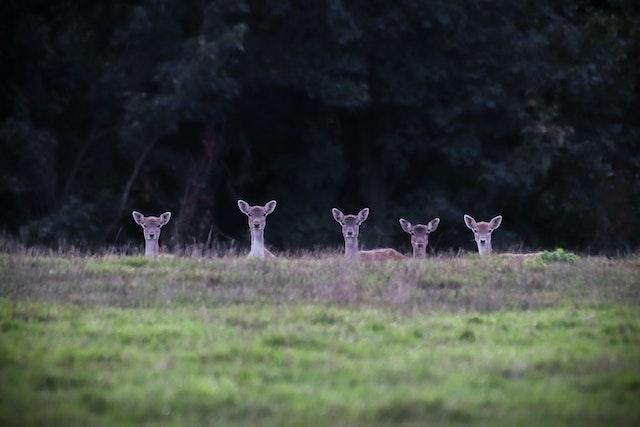If you’re an avid hunter or enjoy observing wildlife, installing a feeder on your property can be a great way to attract deer and other wildlife. However, placing a feeder in the wrong location can be ineffective or detrimental to the animals. This article will explore the best places to put a feeder on your property.
Choosing the Perfect Spot
Location & Distance
The ideal location for a deer feeder is one that provides easy access for the animals. You’ll want to choose a spot easily accessible for you and the deer but not too close to your home or other areas where people congregate. The best location for a feeder is near a natural food source, such as a food plot or natural browse, or natural water source. This will encourage the deer to visit the feeder regularly and make it easier to find food when needed.
Another important consideration is the distance between the feeder and any hunting stands or blinds you have set up on your property. You don’t want to scare off deer that may be coming to feed by placing a feeder too close to your hunting area.
Height
There is also the consideration of feeder height. Ideally, you’ll want to mount the feeder at a height easily accessible for deer but difficult for other animals. Mounting the feeder at least a few feet from the ground will reduce the likelihood of rodents, birds, and other creatures taking the deer’s food.
Wind Direction
The wind’s direction can also affect your feeder’s effectiveness. You’ll want to place the feeder in an area where the wind is less likely to carry the scent of the food away from the feeder. This will help ensure that the deer can easily locate the food and that it will remain fresh for a longer period.
Access
Access to your feeder is another crucial consideration. You should put the feeder wherever you can readily reach it to replenish its supplies and care for it. Furthermore, check sure there are no impediments to refilling or gaining access to the feeder in the immediate vicinity.
Benefits of Placing a Feeder on Your Property
Wildlife Observation
One of the most significant benefits of placing a feeder on your property is observing wildlife up close. Deer are beautiful animals; watching them eat the feed can be a fascinating experience. With a feeder, you can attract deer to your property regularly and enjoy observing them from the comfort of your home.
Hunting Opportunities
For hunters, a feeder can be an effective tool for attracting deer to a specific area for hunting purposes. If you want to increase your chances of harvesting a deer, placing a feeder in a strategic location can help you concentrate on the animals in a specific area. This can make it easier to spot and hunt deer during hunting season.
Improved Habitat
Placing a feeder on your property can also improve the overall habitat for wildlife. You can help deer and other wildlife thrive in your area by providing a reliable food source. This can lead to a healthier and more diverse ecosystem, which can benefit the environment as a whole.
Drawbacks of Placing a Feeder on Your Property
Attracting Unwanted Animals
Placing a feeder on your property may attract more than just deer. Other animals, such as raccoons, squirrels, and even bears, may be drawn to the food source, leading to unwanted visitors and potential safety hazards.
Cost
Maintaining a feeder can be costly, as food, equipment, and regular maintenance can add up over time.
Disease Transmission
When deer congregate around a feeder, there is a higher risk of disease transmission between individuals, potentially leading to the potential spread of chronic wasting disease or other illnesses.
Legal Issues
Depending on your location, regulations or restrictions on feeding deer may exist. Violating these regulations can lead to fines or other legal consequences.
Conclusion
Feeder placement depends on various things. The optimum spot is near a natural food supply, access to you and the deer, and away from humans. The feeder should be at least six feet high to keep animals out. To prevent food fragrance from escaping the feeder, consider wind direction. Consider these criteria to make your land a deer-feeding paradise.


